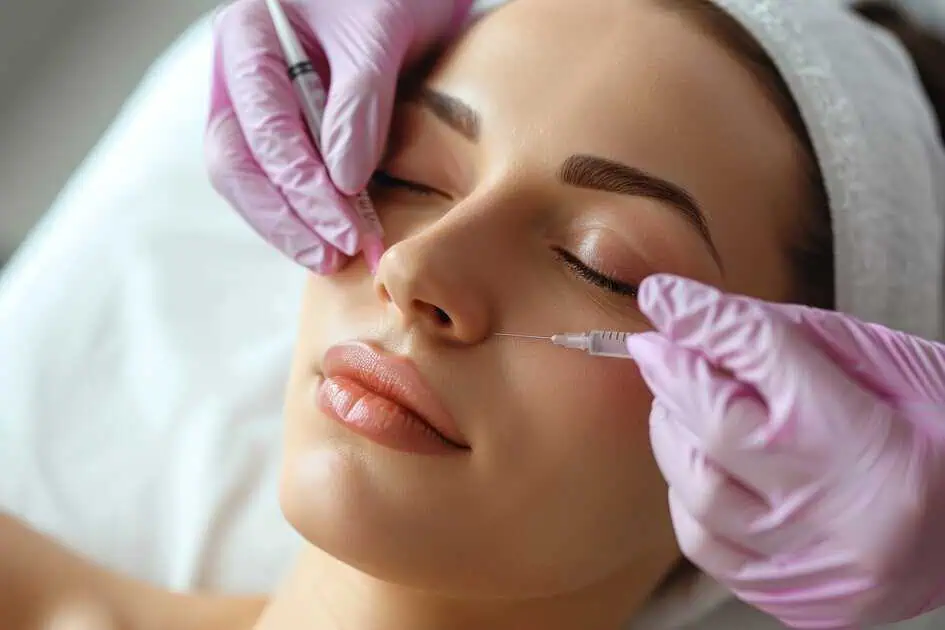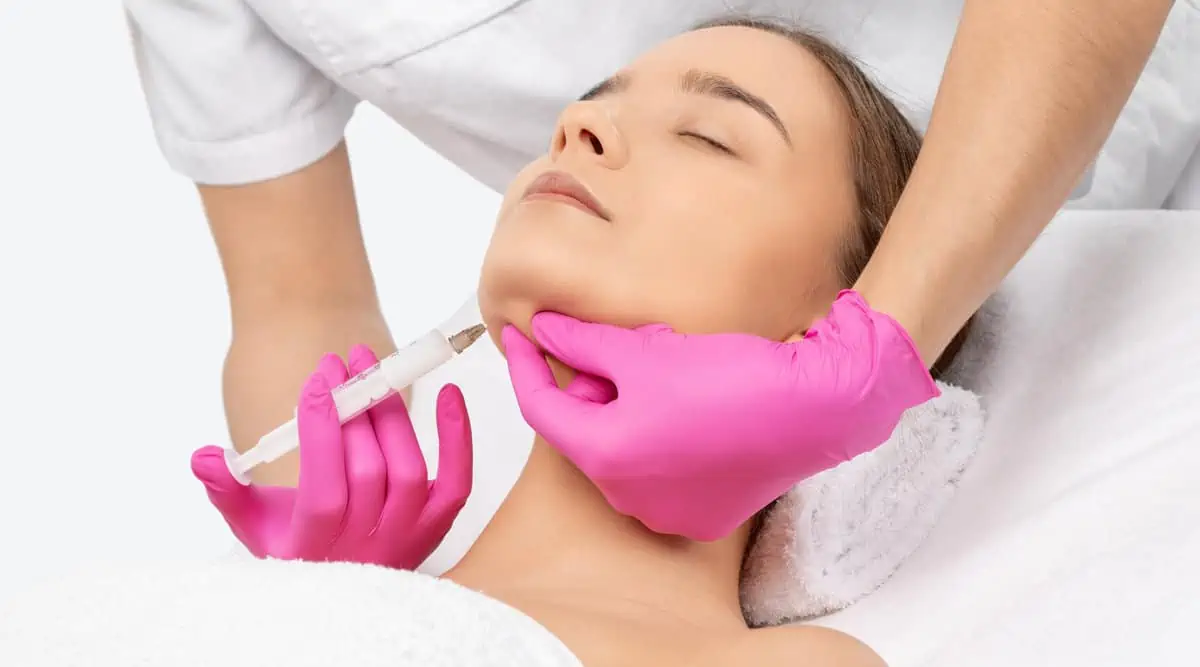At Halo Medspa And IV Bar, we understand that no two individuals are alike, and neither are their skin types. When it comes to skincare treatments like chemical peels, customization is key to achieving the best results. Chemical peels can address various skin concerns, but the choice of peel and its depth should be tailored to your unique skin type and needs. In this blog, we’ll explore the world of chemical peels, different skin types, and the importance of customized solutions to help you achieve the skin you’ve always wanted.
Understanding Chemical Peels
What Are Chemical Peels?
Chemical peels are cosmetic treatments that use various chemical solutions to remove the outer layer of skin, which may be damaged or showing signs of aging, hyperpigmentation, or other imperfections. The result is a smoother, more youthful complexion. The degree of exfoliation and the specific skin issues addressed can vary depending on the type and strength of the peel.
How Do Chemical Peels Work?
Chemical peels work by applying a chemical solution to the skin’s surface, which causes the outer layers to peel off over time. This process reveals the fresh, healthier skin underneath. The new skin is typically smoother, less wrinkled, and more even in color and texture. Chemical peels can help with:
- Fine lines and wrinkles
- Acne and acne scars
- Sun damage and age spots
- Uneven skin tone
- Rough skin texture
- Melasma (skin discoloration)
Common Types of Chemical Peels
- Superficial Peels: These peels use mild acids (e.g., alpha hydroxy acids or AHAs) to exfoliate the outermost layer of skin. They are the gentlest type of peels and require little to no downtime.
- Medium Peels: Medium peels go deeper into the skin, often using trichloroacetic acid (TCA). They effectively address more significant skin issues but may require a few days of recovery.
- Deep Peels: Deep peels penetrate several layers of skin using strong chemicals like phenol. They provide the most dramatic results but necessitate a longer recovery period.
Benefits of Chemical Peels
Chemical peels offer numerous advantages, including:
- Improved skin texture and tone
- Minimized fine lines and wrinkles
- Reduced acne and acne scars
- More even pigmentation
- Enhanced collagen production
- Brighter and rejuvenated skin
Different Skin Types
Understanding Skin Types
Not all skin is created equal, and different skin types require different approaches to skincare. The common skin types include:
- Normal Skin: Normal skin is well-balanced, not too oily or dry, with few imperfections.
- Oily Skin: Oily skin produces excess sebum, making it prone to acne and enlarged pores.
- Dry Skin: Dry skin lacks moisture, often feels tight, and can be flaky or rough.
- Combination Skin: Combination skin is a mix of different skin types in different areas of the face. For example, the T-zone might be oily, while the cheeks are dry.
- Sensitive Skin: Sensitive skin is prone to redness, irritation, and allergies. It requires gentle care.
The Role of Skin Type in Selecting the Right Chemical Peel
Your skin type plays a crucial role in determining the type of chemical peel that is most suitable for you. Each skin type has specific concerns and sensitivities that must be considered when customizing a peel. For example:
- Normal Skin: Normal skin can generally tolerate a variety of peels but can benefit from superficial peels to maintain its healthy glow.
- Oily Skin: Salicylic acid peels are excellent for addressing oily skin concerns and minimizing breakouts.
- Dry Skin: Hydrating and gentle peels, such as lactic acid peels, can help moisturize and revitalize dry skin.
- Combination Skin: A customized approach is essential, targeting oily areas with salicylic acid and dry areas with milder peels.
- Sensitive Skin: Sensitive skin may benefit from milder, non-acidic or superficial peels to avoid irritation.
How Skin Type Affects Peel Depth and Ingredients
The choice of peel depth and the specific ingredients used in the chemical solution are directly influenced by your skin type. The goal is to achieve the desired results while minimizing the risk of adverse reactions. A professional skincare provider will carefully assess your skin type and needs to ensure a safe and effective treatment.
Customized Chemical Peels
Importance of Tailoring Chemical Peels
One of the primary reasons to opt for a customized chemical peel is to achieve optimal results. By tailoring the treatment to your specific skin type, you can address your unique concerns more effectively. Customization allows for a personalized approach that maximizes benefits and minimizes potential side effects.
Consultation and Skin Analysis
The journey to a customized chemical peel begins with a consultation. During this initial meeting, a skincare professional will assess your skin type, discuss your skincare goals, and consider any contraindications. A thorough analysis ensures the peel is tailored to your unique needs and limitations.
Selection of the Appropriate Chemical Peel
Based on your skin type and the issues you wish to address, the skin care provider will recommend a specific type of chemical peel, its depth, and the ingredients involved. Superficial peels are generally safe for all skin types, while medium and deep peels are used cautiously and only as appropriate for the individual.
Expected Results and Recovery Time
The results of a chemical peel vary depending on the type and depth of the peel, but they often include:
- Smoother, younger-looking skin
- Improved skin texture
- Reduction in imperfections
- Enhanced skin tone and radiance
Recovery time will also differ, with superficial peels requiring minimal downtime, while medium and deep peels may have more extended recovery periods.
Benefits of Customization
Achieving Optimal Results
One of the primary benefits of customized chemical peels is achieving optimal results. By matching the treatment to your skin type, you can address your specific concerns effectively, ensuring a more satisfying outcome.
Minimizing the Risk of Adverse Reactions
Chemical peels, when used incorrectly or with the wrong ingredients for your skin type, can result in adverse reactions like redness, burning, or scarring. Customization reduces these risks, making the treatment safer and more predictable.
Enhancing Patient Comfort and Satisfaction
Customized chemical peels not only provide superior results but also enhance patient comfort and satisfaction. Knowing that the treatment is tailored specifically for your skin type can boost your confidence.
Halo Medspa And IV Bar’s Approach
At Halo Medspa And IV Bar, we are committed to providing our clients with the highest skincare expertise and customization. Our professionals have extensive experience tailoring chemical peels to match different skin types and concerns. We use top-quality products and follow best practices to ensure a safe and effective experience.
Preparing for a Customized Chemical Peel
Before your customized chemical peel, there are some essential steps to ensure the best possible results and minimize potential complications. Here’s what you can expect:
Pre-Peel Guidelines and Recommendations
- Avoid Sun Exposure: Stay out of the sun and use sunscreen daily to prevent skin damage and uneven results.
- Discontinue Certain Skincare Products: Your skincare provider will advise you on which products to stop using before the peel.
- Hydrate Your Skin: Properly moisturize your skin in the days leading up to the peel to enhance its resilience.
What to Expect During the Peel Session
The peel session typically involves the following steps:
- Cleansing: Your skin will be thoroughly cleansed to remove any dirt or oils.
- Application of the Peel Solution: The customized peel solution will be applied to your skin.
- Monitoring: The skincare provider will monitor your skin’s response and may adjust the treatment accordingly.
Post-Peel Care and Follow-Up
After the peel, it’s essential to follow the provided post-care instructions, which typically include:
- Avoiding Sun Exposure: Sun protection is crucial after a peel to protect your sensitive, newly revealed skin.
- Moisturizing: Keep your skin moisturized to aid in the healing process.
- Follow-Up Appointments: Depending on the depth of your peel, you may need follow-up appointments to monitor your progress and make any necessary adjustments.
Conclusion
Customized chemical peels are a powerful tool in skin care, offering the potential to address various skin concerns and restore a youthful, radiant complexion. At Halo Medspa And IV Bar, we recognize the significance of matching the right peel to the right skin type, ensuring the best results and minimizing potential risks. Our commitment to customization, safety, and excellence sets us apart in the skincare world.
Are you ready to experience the transformative effects of a customized chemical peel at Halo Medspa And IV Bar? Contact us today to schedule a consultation and take the first step toward healthier, more radiant skin. Our team of professionals is eager to guide you on your skincare journey, tailoring treatments to your unique skin type and needs. Join our satisfied clients and discover the benefits of customized chemical peels at Halo Medspa And IV Bar. Connect with us on social media, and remember to share your skincare journey and experiences. Your story could inspire others to take control of their skin’s health and beauty.
Remember, customized solutions lead to customized results. Your skin deserves nothing less.










